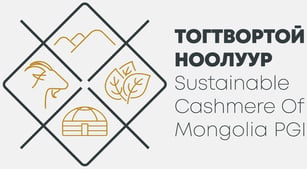
Sustainable Cashmere
of Mongolia PGI
Ethical, certified & traceable chain of value

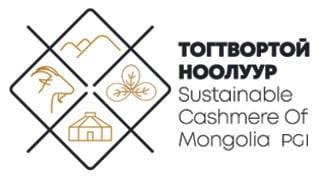
No other Cashmere in the world comes with a PGI certification!
That’s why MNFPUG’s Sustainable Cashmere is so unique and precious.
Our Government-controlled Traceability System and GI Certifications scheme ensure Consumers about the quality of the products they’re buying, and their related History, supporting Mongolia to keep its nomadic millenary traditions alive ♥
About us
MNFPUG Nomadic Herders' Union
The “Mongolian National Federation of Pasture User Groups of Herders" (MNFPUG) Union has been established in 2015 by a High Level Governmental and Global Multi-Stakeholder initiative started by the Swiss Cooperation to International Development (SDC) in Mongolia, with a mission to ensure a Sustainable and fully Traceable viability of the Cashmere Sector in Mongolia.
Responsible Nomads SUSTAINABLE CASHMERE
We enforce our herders and processors to adopt the “Responsible Nomads" (RN) Code of Best Herding Practice and the “Mongolian Noble Fiber” (MNF) Standard to minimize environmental impact on fragile Mongolian rangelands, safeguard and ethically reward herder livelihoods, and meet high animal welfare standards.

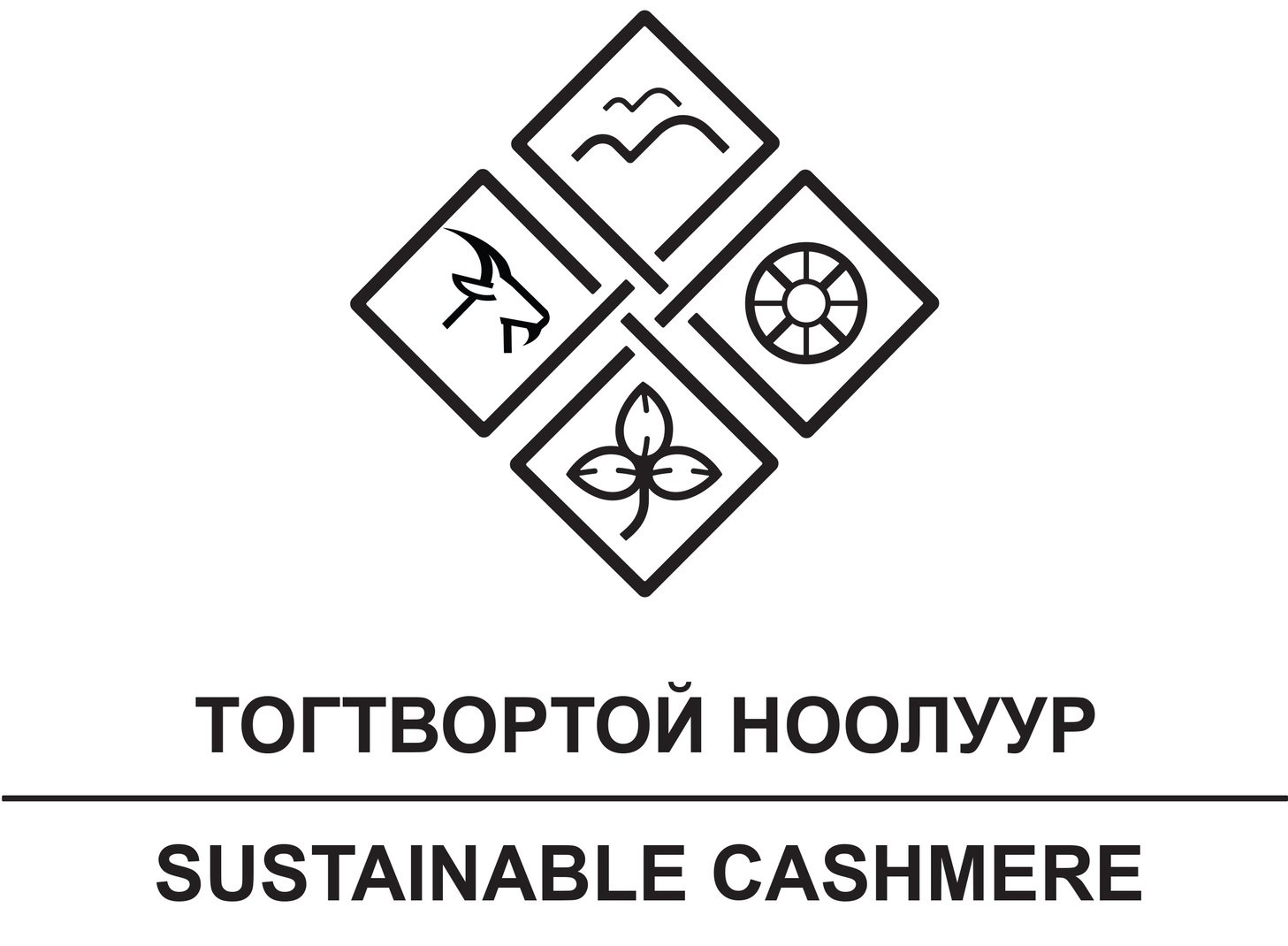
Sustainable Cashmere
discover our four main focus
REDUCE
ENVIRONMENTAL IMPACT
“The land is the soul of Mongolia” ancient mongolian quote. "Responsible Nomads" Code of Best Herding Practice was established by Swiss SDC Cooperation in 2011. It is the only standard for herding Sustainable Cashmere officially approved by the Government of Mongolia ...
SECURE
HERDER LIVELIHOODS
Nomadic herders have been grazing Cashmere goats on Mongolia’s rangelands for the past 4.500 years, and they produce about 40% of global World-wide Cashmere fiber. Granting Nomadic Herders a premium price for their certified and truly “Sustainable Cashmere”, we build value for their new generations ...
IMPROVE
ANIMAL WELFARE
Ensuring animal health and well-being is crucial to Cashmere Fiber’s quality, Nomadic Herders’ prosperity and their consequent way of life. Mongolians practice millenary old pastoral herding methods and live alongside their animals, accompanying them to their ...
FAIR TRADE & SUSTAINABLE CHAIN OF SUPPLY
“Mongolian National Federation of Pasture User Groups of Herders” Union (MNFPUG) represents 70% of Mongolian Cashmere Herders, whose Cooperatives handle about 28% of the worldwide global production of Cashmere fiber. “Responsible Nomads” ...

MNFPUG Union
our sustainable cashmere
chain of value
Who we are
"Mongolian National Federation of Pasture User Groups of Herders" (MNFPUG) Union
“Mongolian National Federation of Pasture User Groups of Herders” Union (NFPUG), notably is the most important Social Stakeholder of the Mongolian Cashmere Sector, as undersigned by the Italian and Mongolian Governments, and endorsed by the United States Government and the USAID.
MNFPUG’s unique knowhow comes from a nineteen (!) years long work, thanks to Aid grants financed by the Swiss Development Cooperation (SDC) in Mongolia, and the support of the European Union’s DEVCO and Switch Asia Aid programs.
MNFPUG’s strategic Social role has been endorsed by the US Government and USAID, and officialized in 2021 by both the Italian and the Mongolian Governments in a written bilateral agreement.
MNFPUG and its Institutional Partners, work with the end-to-end Cashmere Fiber Supply Chain, connecting Nomadic Herder Cooperatives to Fashion indutry Luxury Brands and Retailers, allowing Rural Households to be paid a “Fair-Trade” price for their Sustainable production, whilst also ensuring to End-consumers the possibility to trace and verify from the very origin MNFPUG’s Sustainable Cashmere’s claims and story telling.

Main areas of activity
Advocacy, Lobbying, Sustainable Cashmerre Awareness Raising
Host National and Regional "Thing Thanks", Workshops & Forums
Sustainability Training and Consultancy to Nomadic Herders
Advocacy and Preservation of Cultural & Traditional Nomadic Heritages
Formulation of Rangeland Preservation & Policy Documents
Implementation of Research, Development and Experimental Projects
Participatory Pastor User Groups (PUGs)
based Rangeland Management.
RANGELAND USE PLANNING
Facilitate collective and participatory planning, implementation and monitoring of Rangeland use & healthy conditions; strengthening adaptation capacity of local Nomadic Communites to climate change effects.
RANGELAND MANAGEMENT REGULATION
Formulation, discussion, adoption, implementation and monitoring of locally embedded Rangeland Management Regulations, according to "Responsible Nomads" Code of Best Herding Practice.
RANGELAND HEALTH ASSESSMENT AND MONITORING
Ecological capacity based and participatory Rangeland Health assessment, monitoring and reporting, estimation of carrying capacity, impacts of improved grazing management, estimating Greenhouse Gas sequestration and CO2 emissions of Mongolian fragile Steppe grasslands.
RANGELAND USE AGREEMENTS
Facilitate establishment, enforcement, implementation and monitoring of Rangeland Use Agreements Nation-wide; subsequent Sustainability Trainings to new participating Nomadic Hoseholds and Cooperatives.
+ Our Activities in short
Particular needs and constraints
FORMATION AND CAPACITY DEVELOPMENT OF LOCAL PASTURE USER GROUP OF HERDERS
Organizing Nomadic Herders into (local) Pasture User Groups for Sustainable Management of Shared Public Rangelands and their Capacity Development.
DEVELOPMENT OF HERDER ORGANIZATIONS AT NATIONAL LEVEL Facilitate organization and development of Soum (provinces) associations of Pasture User Groups and Aimag (regions) Federation of Pasture User Groups of Herders (MNFPUG Union), as a Collective and Civil Society Organization for PUGs’ formation, and development of Nomadic Herders Marketing Cooperatives, and Savings & Credit Cooperatives
HERDER HUB
Provides knowledge management and training platforms for APUGs, AFeds, cooperatives and provide services to Nomadic Herder Households.
E-HERDER
Expand Cooperation and Communication among Nomadic Herder Households through e-technology.
HERDERS MATCHING FUNDS
Promote Nomadic Herder Savings, better Cash Flow Management, formation of Nomadic Herders Matching Funds and Capacity Development.
GREEN LOAN PROGRAM
Provide Nomadic Herders with acces to Low-interest Rate Soft Loans
MICROCREDIT
Financing small Projects aimed at building Capacity of Nomadic Herder Cooperatives and creating Local Brand products. Promoting local Livestock Production, select and support small projects on Environment-Friendly production activities.
CAPACITY BUILDING FOR HERDER WOMEN
Develop skills and income, generation of new opportunities for Nomadic Herder Woman and support their networking.

“RESPONSIBLE NOMADS”
Code of Best Herding Pratice
Healthy rangeland, healthy animals, healthy products, sustainable herders ...
Happy and healthy animals produce finer quality Cashmere fiber, allowing producers’ prosperity and new generations to keep our nomadic heritage and traditions alive
In Mongolia, Nomadic Herders practice millenary old pastoral herding methods and live alongside their animals, accompanying them to their pasture in a nomadic way, to find sufficient forage. Mongolian herders collect Cashmere Fiber gently brushing goats at moulting time in spring, not sheering them, making their millenary activity totally Animal Friendly, opposite to intensive farming run in Inner Mongolia (China). An increasing Global Warming makes them face harsh and unpredictable environments, whether that be droughts, storms and extreme temperature fluctuations which reach minus 55° in wintertime. “Responsible Nomads” Code of Best Herding Practice ensure that participating Mongolian Herder Households and Cooperatives monitor and improve their Animal Welfare practices, making their unique Nomadic production of “Sustainable Cashmere” 100% Animal welfare-friendly.
Responsible Nomads (RN) Code of Best Herding Practice, is the result of a 19 years long committment to support Mongolian Nomadic Herder households, their Animals’ Welfare and Rangeland recovery and protection.
First developed by the Swiss Cooperation to International Development (SDC) in Mongolia, then spread Nation-wide by MFPUG Union, has now been approved by Order No.C/55 of the Director of the Standardization and Metrology Agency dated 30 December 2020 as Mongolian Standard MNS 6991:2020 (Requirements for Responsible Nomads Code of Practices for Sustainable Nomadic Livestock production).
Responsible Nomands CoP is the only valid and official Mongolian Standard for Sustainable Cashmere Fiber production.
The new official Responsible Nomads Government Standard for Sustainable Cashmere Fiber production, jointly with the Mongolian Noble Fiber Government standard for suh a fiber clean processing, RN Blockchain Traceability system, and the Protected Geographical Indication of Origin (PGI) certification, ensure to end consumers all unique values which underly to Sustainable Cashmere of Mongolia.
ThRangeland Health is constantly monitored by digital procedures which elaborate data from a network of more than 4.540 webcams, to determine proper actions Herders have to take for preserving Mongolia’s fragile wild Steppe.
Mongolian Ministry of Agriculture and Light Indistry (MOFALI), and Mongolian General Veterinary Authority (GAVS) operate on the fields, registering in a Government Database Animal Health data.
In 2018-2020, 5.181 Nomadic Herder Households from participating Soums (group of Villages) received full trainings.
National trainings for Pastor User Groups (PUGs) leaders are held once a year at MNFPUG Union Forum.
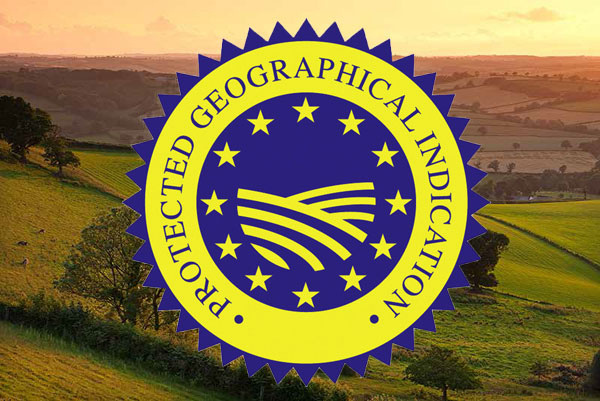

PGI CERTIFICATION
Protected Geographic Indication of origin
Ensuring consumers tradition and heritage, authenticity, cultural property, artisanal and local origin of their buyings.
The concept of Geographical Indication (GI) certification
Introduced in France in 1934, Agricultural Products GIs have proven to yield positive outcomes for producers: GIs are the most effective means to internationally brand products unique to specific regions, crafted in accordance with local traditions.
They often encourage micro-producers to form consortia, promoting overall harmonization in the production chain through common production guidelines (best practices) set by key stakeholders. Well-managed GI branding provides visibility for the regions of origin, fostering growth in service industries, side businesses, and tourism. EU consumers are notably willing to pay a premium for GI-certified quality products.
For consumers: GIs assure end consumers of the genuine quality and origin of products, safeguarding against counterfeit goods. They serve as a potent tool for branding distinctive products, bolstered by the requirement to publicly disclose certified products' production codes, providing consumers with transparent information to make informed purchases.
Protection of GIs is established at international level by World Trade Organization (WTO) Trade Related Aspects of Intellectual Property Rights (TRIPS)
Article 22, Protection of Geographical Indications (GIs)
“Geographical indications are indications which identify a good as originating in the territory of a Member, or a region or locality in that territory, where a given quality, reputation or other characteristic of the good is essentially attributable to its geographical origin“.
Mongolia Intellectual Property Office (IPOM) issued to MNFPUG GI protection for its Sustainable Cashmere and other Noble Fibers in 2020-21.
MNFPUG has now applied for the EU IGP registration of its national Mongolian GIs, as provided by WTO reciprocity treaties. We expect the procedure to be finalized in 2024.
MNFPUG’s Sustainable Cashmere’s GIs are the most powerfull quality label which guarantees to the consumers:
- the origin of the product;
- the characteristics of the product;
- the link between those characteristics and its origin;
- that the product specifications have been audited by third party organizations approved by the Government.
We're proud that our GIs serve as tools for conserving local cultural heritage and traditional production methods, providing a powerful marketing advantage for Nomadic Herder Households and Cooperatives. This benefits Mongolia's rural areas, ensuring fair and ethical competition and fostering sustainable development for future generations!

MNFPUG
Sustainable Cashmere Forum
Our Pastor User Groups (PUGs)'s leaders yearly national meeting, to discuss trainings to Sustainable Herding, results achieved and new strategies.
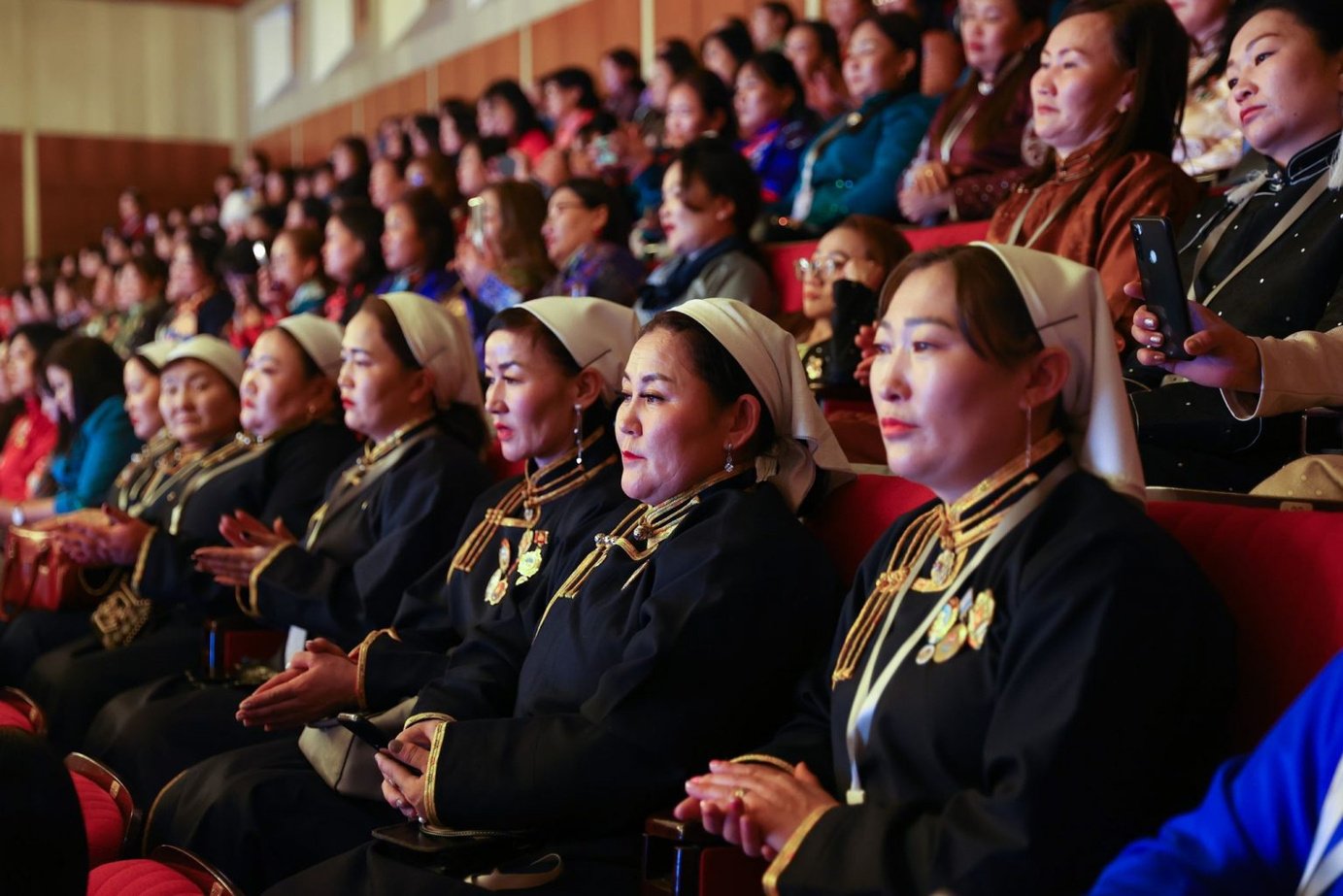
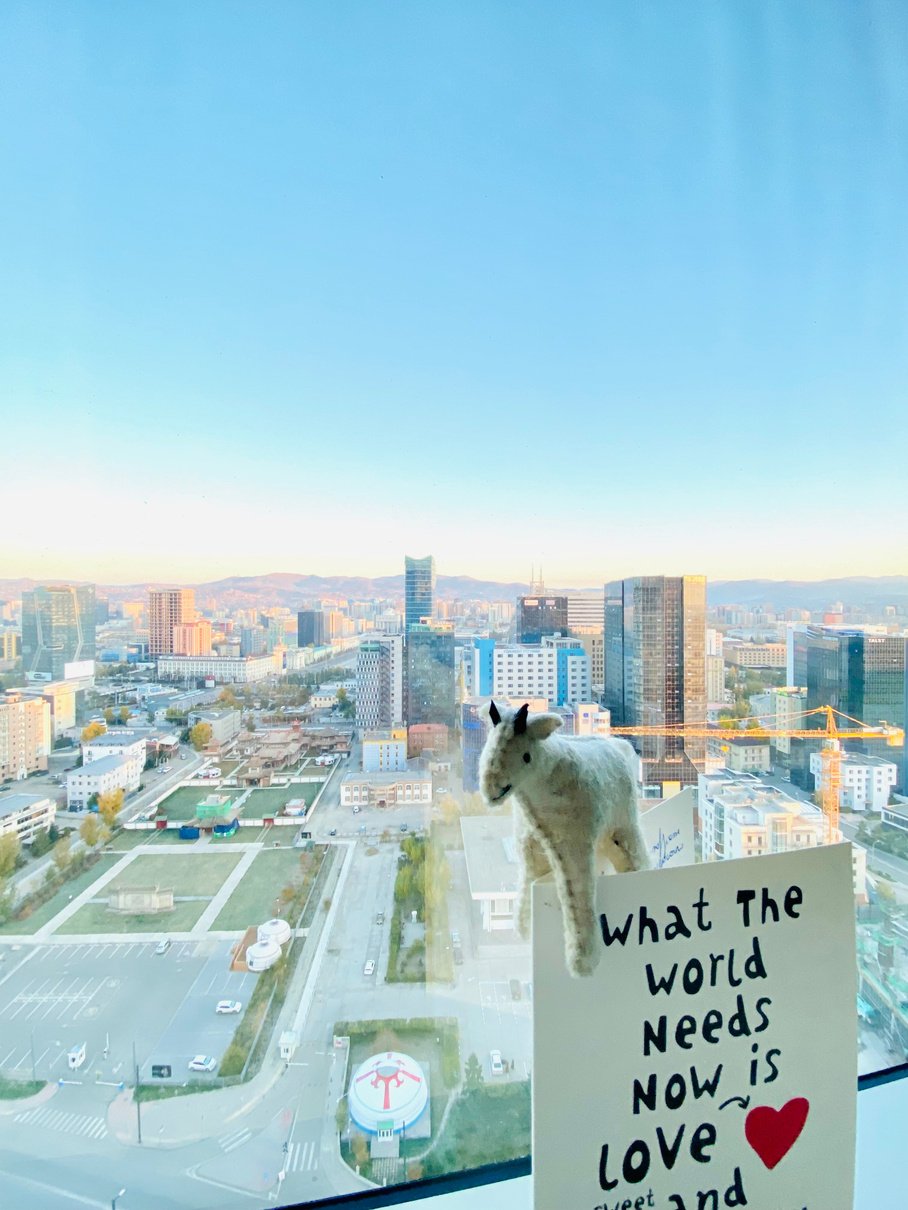

A brief foreward
Reflecting Effective and Rational Use, Research and Protection of this Fragile Natural Resource, in Land Management Policy, Planning, Implementation and evaluation at all levels, is the basis for the development of Sustainable & Animal-friendly Pastoral Animal Husbandry, while protecting precious Mongolian Rangeland.
MNFPUG Union is the most important Social organization in Mongolia, representing 1/3 of total Mongolian Population, and 70% of Rural Nomadic Households.
Disseminating the Pastor User Groups (PUGs) approch and Responsible Nomads Code of Best Herding Practice (RN CoP) is one of MNFPUG's key focus to support Nomadic Herders' Cashmere sector.
MFPUG Sustainable Cashmere Forum is the yearly venue where we train since 2017 our PUGs Leader to Sustainability, openly sharing with them and the public results achieved, to jointly discuss constraints and actions to enforce.
MNFPUG Union & UN’s SDG, ethical & sustainable chain of supply
Particular needs and constraints
A major challenge facing both Mongolian and EU producers is from counterfeit lower priced products, claiming similar reputation but with lower quality standards, which are causing the gradual extinction of local industrial Heritage and Skills.
Unfair intra and (predominantly) extra-Eu competition, with no whatsoever respect for the environment and social issues, endanger both Countries’ artisan and micro-producers, which often keep traditional and unique know-how alive, directly linked to Local Heritage especially in Rural Areas.
Millenary Nomadic traditions would extinguish, shall Mongolians not be able to brand their unique products and generate Added Sustainable Value in their own Country, rather than to be exploited by foreign middle men who operate a monopoly for trading 94% of Mongolian cashmere fiber, also to western buyers.
Ethical "Fair-Trade" Practice.
By granting herders a premium price for their Certified “Sustainable Cashmere” we build their economic well-being, preventing new herder generations from moving to city slums, ensuring they’ll be able to carry their precious nomadic heritage traditions for generations to come.
Social Development Projects.
Profits generated by MNFPUG’s Sustainable Cashmere trading are reinvested onto Social Projects at participating AIMAGs (Provinces), and at Nomadic Herder Cooperatives and Pastor User Groups.
Greenhouse Gas Emissions (GHG) Mitigation.
94% of Mongolian Cashmere Fiber currently transit to China, to be then re-exported to European processing mills; NFPUG's direct-trade new business model shortern the Chain of Supply, allowing to reduce 28% of CO2 emissions caused by unnecessary transportation.
Intensive Farming vs. Nomadic Herding. Cashmere goats roam freely in perfect symbiosis with Mongolia's Steppe, while they’re intensively farmed in Inner Mongolia, China. "Wealthy" Mongolian households own 4/500 goats, yielding up to 50-60 kg of dehaired Cashmere annually. In contrast, medium-sized Chinese intensive farms manage 13/15,000 goats, treating them with water-polluting antibiotics and feeding them industrial fodder. The production of animal fee relys on fossil carbon dioxide (CO2) and nitrous oxide (N2O), the most prevalent greenhouse gases.

Sustainable Cashmere
of Mongolia PGI
Genuine, ethical, government certified,
fully traceable Sustainability
A NINETEEN-YEAR-LONG
ETHICAL JOURNEY
Reflecting the Effective and Rational Use, Research, and Protection of this Fragile Natural Resource in Land Management Policy, Planning, Implementation, and Evaluation at all levels is the Basis for the Development of Sustainable & Animal-Friendly Pastoral Animal Husbandry.
To achieve this, it was essential to Monitor and Determine Pasture Conditions by conducting a Complex Assessment, including Pasture Productivity and Pasture Recovery evaluations, rather than relying solely on Quantitative Indicators, such as Declining Capacity to provide animal feed and overgrazing.
The Swiss Government’s SDC Aid Development Cooperation initiated its “Green Gold of Mongolia” project in 2004. The project aimed to Identify the Root Causes of Pasture Degradation and to introduce Sustainable Pasture Management. This was done through long and short-term Monitoring of Pasture Conditions, in addition to adopting Responsible Livestock Management and Production based on the establishment of Pasture User Groups (PUGs) and Pasture Use Agreements (PUAs).
To achieve these goals, the Green Gold Animal Health Project established the “Mongolian National Federation of Pasture User Groups of Herders” Union (MNFPUG) and partnered with key Mongolian government and non-government organizations. These included the Mongolian Pasture Users Association (MPUA), the Ministry of Food, Agriculture, and Light Industry (MOFALI), the Agency of Land Administration and Management, Geodesy, and Cartography (ALAMGC), the National Agency for Meteorology and Environmental Monitoring (NAMEM), Mongolian University of Life Sciences (MULS), the MOFALI Research and Development Center, General Authority of Veterinary Services (GAVS), State Central Veterinary Laboratory (SCVL), as well as their branches and representative offices at the Aimag (Province) and Soum (group of villages) levels.
Bringing MNFPUG’s “Sustainable Cashmere” to the market marks the final step of a Nineteen-Year (!) Long Ethical Journey. This journey allows Mongolian Nomadic Herders to preserve their ancestral heritage, Mongolia’s unique Steppe Rangeland, while also providing end consumers with a genuine, Fair Trade, Government-Certified Sustainable, and Fully Traceable Story.
Reduce Environmental Impact
Nomadic pastoralism
Nomadic pastoralism is the backbone of food security in Mongolia. More than 210,000 rural households (1/3 of the total population) are keeping around 40 million livestock comprising sheep, goats, cattle, yak, horses and camels.
Degradation of Mongolian rangeland was increasing and affected 70% of the Mongolian territory. Overgrazing, Global Warming and the lack of a Regulatory Framework are the main causes of rangeland degradation.
MNFPUG's and Swiss Government SDC’s “Green Gold of Mongolia” Project, facilitated collective actions among nomadic herders organizing pasture user groups, to implement measures preventing rangeland degradation.
MNFPUG's “Responsible Nomads" Code of Best Herding Practice” is the only standard for Mongolian Sustainable Cashmere officially approved by the Government of Mongolia, and it ensures that steppe rangelands are managed in a way to reduce pasture degradation and protect wildlife.
Rotational grazing, resting practices, hay making and feeding during the winter are among the introduced measures, along with a network of 4.540+ webcams and observation points to monitor Rangeland regeneration.

Best practice results
The results are an increased productivity and an adaptation of the herd size to the carrying capacity of the rangelands. NFPUG encourages herders' collective actions in better management of rangeland. Members of Pasture Users' Groups (herders' self-organizations) join their forces in many ways, in order to overcome environmental and economic hardships that herders face in their everyday life.
In 2016-2020, 44.2 Million Hectares of pastures across the country have been preserved in Healthy Conditions, and 20.6 million hectares were avoided Degradation by managing pastures according to Pastor User Agreements (PUAs).
By 2020, a total of 4 Million Hectares (!) of Degraded Rangeland have been rehabilitated by MNFPUG through 1.605+ Pasture User Groups (PUGs), representing more than 92.000 Nomadic Herder households (70% of Mongolian Nomadic Herders, or 1/3 of total Mongolia’s population).
MNFPUG provides recommendations and shares technologies for the recovery of pasture vegetation, adjusting the number and structure of livestock herds to meet the carrying capacity of pastures, and adopting the scheduled use of pastures according to pasture use agreements. As a result, the "Responsible Nomads" Code of Best Herding Practice, is now adopted in 169 Soums (group of Villages) representing different natural zones across the country.

Improve Animal Welfare
Ensuring Animal Health and well-being is also a crucial matter to Cashmere Fiber’s Quality, Producers’ Prosperity, and their New Generations' consequent Way of Life.
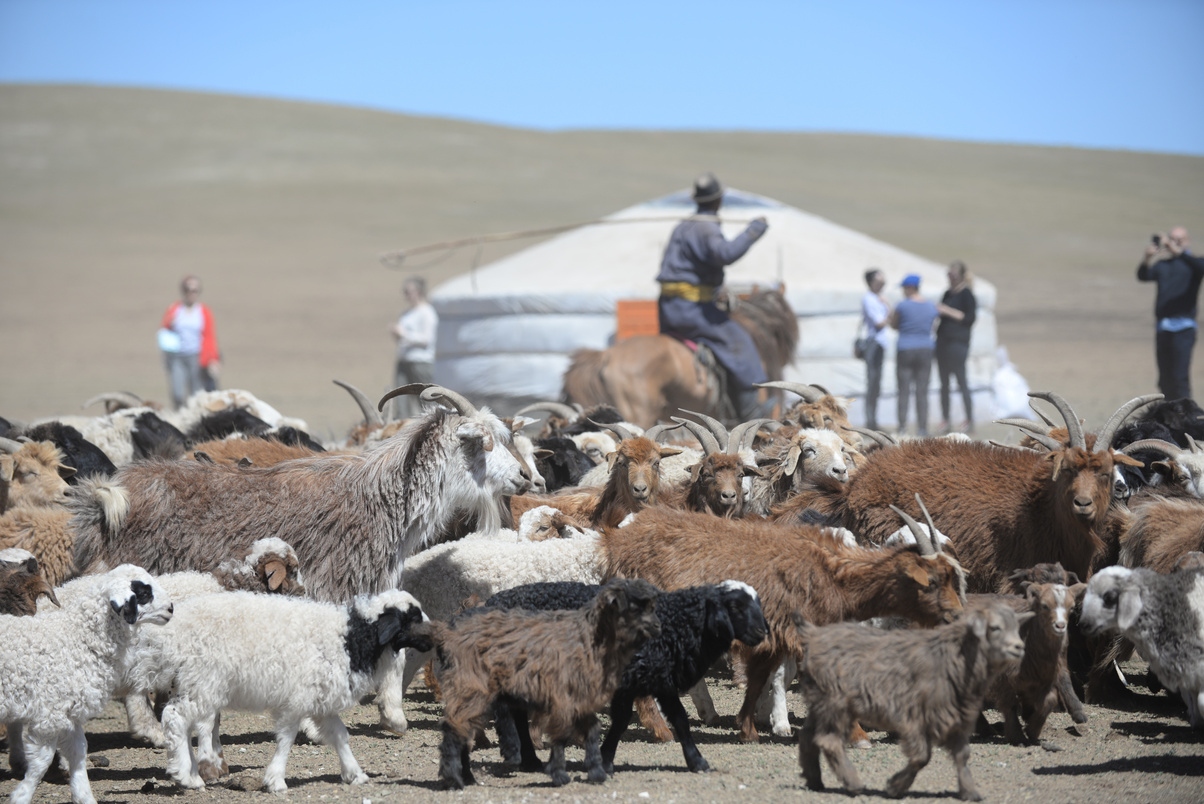

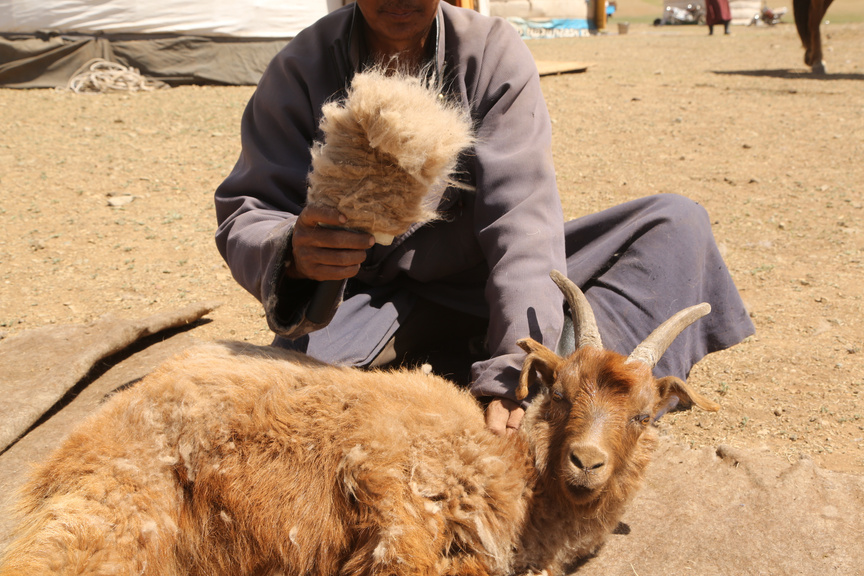
A brief foreward
Nomadic Herders practice millenary old pastoral herding methods and live alongside their animals, accompanying them to their pasture in a nomadic way, to find sufficient forage. Mongolian herders collect Cashmere Fiber gently brushing goats at moulting time in spring, not sheering them, making their millenary activity totally Animal Friendly, opposite to intensive farming run in Inner Mongolia (China).
An increasing Global Warming makes them face harsh and unpredictable environments, whether that be droughts, storms and extreme temperature fluctuations which reach minus 55° in wintertime.
“Responsible Nomads” Code of Best Herding Practice ensure that participating Mongolian Herder Households and Cooperatives monitor and improve their animal welfare practices, making their unique nomadic pastoralism production of “Sustainable Cashmere” also animal welfare-friendly.
The Green Gold Animal Health Project, in collaboration with Mongolian Ministry of Agriculture and Light Indistry (MOFALI), and Mongolian General Veterinary Authority (GAVS), developed a digital Traceability System to register the Origin and Health of Livestock.
The database management was handed over to GAVS in November 2018, and MNFPUG worked on the implementation Nationwide of the system. The Animal Health Monitoring System, or Integrated Veterinary System, allow MNFPUG’s Households to Certify the Origin and Health of Livestock.
The digital system helps to issue Veterinary Certificates based on Factual Evidence, and quickly provide the end user with product information.
In addition, thanks to the adoption of Near Field Technology (NFT) heartags, GAVS signed a collaboration agreement with the National Police Agency to curb Livestock Theft, and the system was expanded by connecting to the National Police network. Since the expansion of MNFPUG’s Veterinary System Nationwide, soum veterinarians have issued 774.756 E-certificates to Herders and Buyers.
MNFPUG Union worked jointly with the Government of Mongolia to the implementation of a new Livestock Taxation, approved in January 2021, to limit animal stock growth, which will oblige Herders to focus onto Quality, not Quantity of their production.
MNFPUG worked with partners on organizing training for veterinarians and veterinary specialists, the provision of equipment for offices, laboratories, and animal health traceability systems, strengthening capacity, and constructing veterinary service buildings at SOUMs (group of Villages) and AIMAGs (Provinces) throughout Mongolia.
In collaboration with Government of Mongolia’s General Veterinary Authority (GAVS) and National Agency Meteorology and the Environmental Monitoring (NAMEM), MNFPUG also developed and approved a methodology for Detecting Antibiotic residue in meat and milk, improved relevant legislation, and strengthened the capacity of Soums’ Veterinarians.
The Premi Test, E-readers, and Unisensor tools approved and widely used in the European Union were provided by the project to detect Antibiotic residue.
The role of informed and experienced herders is very important for the early detection and prevention of infectious animal disease outbreaks. Therefore, in cooperation with the School of Veterinary Medicine of the Mongolian University of Life ( MULS), MNFPUG organize training on animal health for Nomadic Herders households; a training module on 12 topics and video lessons on five topics were produced to raise public awareness. In 2018-2020, 5.181 Nomadic Herder Households from the project SOUMs (group of Villages) received full trainings.

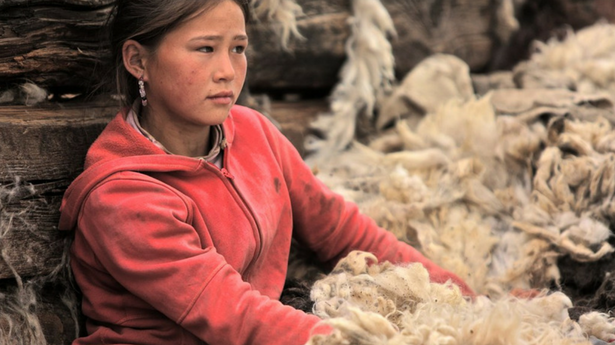
Secure Herders Livelihoods
Our Mission, to Protect Animal Welfare and Security of Herder Livelihood
through Maintaining the Integrity of Fragile Rangeland Ecosystem.
Nomadic herders have been grazing Cashmere goats on Mongolia’s rangelands for over 4.500 years, and they now produce about 40% of global worldwide Cashmere Fiber.
Sustainable development of Nomadic Livestock Husbandry is the basis of securing the integrity of Environmental well-being of Mongolia, for it constitutes 70% of total land territory management, and providing domestic processing industry with Sustainable Raw Materials, to continue Securing Job Places for half of the population; women moreover account to 70% of the workforce at processing mills.
Women account to 70% of the workforce at processing mills, and are increasingly managing Nomadic Herders' Households & Cooperatives incomes and trainings to Sustainable Herding.
By granting Nomadic Herders a premium price for their certified “Sustainable Cashmere” we build their economic well-being, preventing new herder generations from moving to city slums, ensuring they’ll be able to carry their precious Nomadic Heritage Traditions for generations to come.
Profits generated by MNFPUG’s Sustainable Cashmere trading are reinvested onto social projects at participating AIMAG (PROVINCE)s (Provinces), and at Nomadic Herder Cooperatives and Pastor User Groups.

Ensuring a sustainable future for Mongolia's new generations.
Mongolia is a strategic ally to the EU and the USA, also due to geopolitical reasons. Forty percent of the worldwide Cashmere Fiber production comes from Mongolia, and the Cashmere sector generates the second highest GDP value for the Mongolian economy.
The “Mongolian National Federation of Pasture User Groups of Herders” Union (MNFPUG) represents 70% of Mongolia's rural population, which is one-third of the total Mongolian population. Our cooperatives produce 28% of the world's cashmere production.
We are proud to support Mongolia's sustainable development, delivering a better future to all of our 92,000+ Nomadic Rural Households ♥
Join us in building value for Mongolia

Partners and sponsors
MNFPUG Union has shared its know-how with various programs funded by many international institutions, for which it has acted as a “Managing Partner”, including also the European Community (Step Ecolab project), United Nations (Ensure project), FAO (“Creation of Nomadic Herder Information Hub” project), UNDP (Sustainable Cashmere Round Table). In 2021, the Italian and US governments formally recognized the role and strategic importance of MNFPUG (USAID / USTR Report to the Mongolian Government of 12.03.2021, and the Italy-Mongolia Bilateral Technical-Economic Commission of 21.06.2021). These are just some of the projects we tendered our expertise to:
Step Ecolab
MNFPUG provided its technical know-how and acted as Managing Partner of the EU funded program
Pastoralist Knowledge Hub
MNFPUG and CIRAD
addressed the knowledge gap joining the "Pastoralist-Driven Data Management System" project
USAID & USTR Report
MNFPUG’s business model and social role have been officially endorsed by the US Government to the Government of Mongolia
our locations
European Branch Office
© 2024 Copyright – MNFPUG Sustainable Cashmere Srl
Images : courtesy of Swiss SDC, MNFPUG, Saldarini, Cashmere Flakes